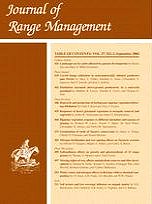The regional scale response of soil carbon mass to long-term grazing exclusion was investigated in the Canadian Great Plains. Vegetation, litter, macro-organic matter and soil were sampled in paired grazed and ungrazed treatments from 9 independent locations along an environmental gradient in southern Alberta. Vegetation and litter carbon mass were greater on ungrazed treatments, but no consistent grazing effect was observed for macro-organic matter (roots, subsurface litter) or soil (fine particles < 2mm) carbon mass per equivalent soil mass. Soil carbon in mixed grass prairie was positively correlated with clay content, but no grazing effect could be detected when this subset (n = 7) was analyzed by ANCOVA. Comparison of multiple sites with a consistent sampling and reporting method revealed no general trend in the response of soil carbon to grazing. Current range management practices to maintain range types in good to poor condition appear to be consistent with maintaining the soil organic matter pool in the northern Great Plains.
How to translate text using browser tools
1 July 2004
Grazing and soil carbon along a gradient of Alberta rangelands
DARCY C. HENDERSON,
BEN H. ELLERT,
M. ANNE NAETH
ACCESS THE FULL ARTICLE

Journal of Range Management
Vol. 57 • No. 4
July 2004
Vol. 57 • No. 4
July 2004
bulk density
carbon sequestration
clay
equivalent soil mass
mixed grass prairie





